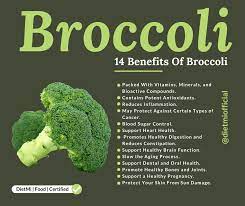Whole30 Weight Loss Timeline Week by Week

whole30 weight loss timeline
Embarking on a Whole30 journey is an exciting step towards a healthier you. This 30-day elimination diet isn’t just about weight loss, it’s about resetting your relationship with food and discovering how it truly impacts your body. While the prospect of a month filled with delicious, whole foods is enticing, navigating the initial whole30 weight loss timeline can be daunting. Don’t worry, Dietarix is here to guide you through each week, highlighting what to expect and equipping you with tips to conquer cravings and smash your goals.
Week 1: Embracing the Reset
The first week sets the stage for your entire Whole30 experience. It’s a period of detoxification and adaptation as you eliminate processed foods, added sugar, alcohol, dairy, grains, and legumes.
What to Expect:
- Cravings: Brace yourself for potential sugar and carb withdrawal headaches, fatigue, and intense cravings. These are temporary!
- Digestive Changes: Your gut microbiome is adjusting to the influx of fiber-rich whole foods, leading to potential bloating or constipation.
- Emotional Shifts: You might experience irritability or frustration – it’s normal to miss familiar foods.
Tips for Success:
- Plan Your Meals: Spend time prepping healthy snacks and meals to avoid temptation.
- Hydration is Key: Drink plenty of water throughout the day to combat cravings and aid digestion.
- Prioritize Sleep: Adequate sleep helps regulate hormones and cravings.
- Find Your Support System: Join online communities or connect with friends embarking on their Whole30 journey for encouragement.

Week 2: Energy Awakens
By week two, your body starts adapting to the new fuel source. Many report a surge in energy, improved sleep, and a clearer mind.
What to Expect:
- Increased Energy Levels: As your body adjusts to burning fat for fuel, you might feel more energized and focused.
- Improved Sleep: With reduced sugar intake, your sleep quality can significantly improve.
- Mental Clarity: Brain fog lifts, and you might experience sharper cognitive function.
Tips for Success:
- Spice Up Your Meals: Explore a variety of spices and herbs to keep your taste buds engaged.
- Experiment with New Recipes: Find delicious Whole30-compliant recipes to prevent boredom.
- Stay Active: Regular exercise boosts your metabolism and overall well-being.
- Listen to Your Body: Pay attention to hunger and satiety cues to avoid overeating.
Week 3: Breaking Through Plateaus
Week three can be a tricky one. You might experience a plateau in terms of weight loss or a resurgence of cravings. Don’t get discouraged – this is a normal part of the whole30 weight loss timeline.
What to Expect:
- Weight Loss Plateaus: Don’t be surprised if the scale doesn’t budge. Focus on non-scale victories like improved energy and better sleep.
- Renewed Cravings: Cravings might resurface – resist the urge and reach for healthy alternatives like fruits or vegetables.
Tips for Success:
- Switch Up Your Workouts: Vary your exercise routine to maintain a calorie deficit and challenge your body.
- Mindful Eating: Practice mindful eating techniques to savor your food and avoid mindless snacking.
- Stay Hydrated: Dehydration can mimic hunger pangs. Drink plenty of water throughout the day.
- Reflect on Your Progress: Take time to reflect on how you feel physically and mentally. Celebrate your non-scale victories!

Week 4: Embracing the Transformation
By week four, you’ve likely overcome the initial challenges and are reaping the benefits of your Whole30 journey.
What to Expect:
- Reduced Bloating: With a balanced gut microbiome, you might experience less bloating and digestive discomfort.
- Improved Mood: Eliminating inflammatory foods can lead to a more stable mood and reduced anxiety.
- Body Composition Changes: You might start noticing changes in your body composition, like increased muscle tone and definition.
Tips for Success:
- Stay Motivated: Review your goals and remind yourself of the progress you’ve made.
- Meal Prep for Success: Continue prepping healthy meals and snacks to avoid unhealthy temptations.
- Strength Training: Incorporate strength training exercises to build muscle mass and boost metabolism.
- Document Your Journey: Take progress photos or keep a journal to track your physical and mental changes.
Are you looking for whole30 weight loss timeline then you are at right page click the link given below and get whole30 weight loss timeline week by week.
Conclusion: A Sustainable Lifestyle Awaits
The Whole30 journey is more than just a 30-day weight loss program. It’s a transformative experience that equips you with the knowledge and tools to build a sustainable, healthy relationship with food. By the end of the program, you’ll have a newfound appreciation for whole, unprocessed foods and a deeper understanding of how they impact your body and mind.
Remember, weight loss is just one of the many benefits of Whole30. You might experience improved sleep, increased energy levels, better digestion, and a more stable mood. The key to long-term success lies in integrating the lessons learned from Whole30 into your daily life. Focus on mindful eating, prioritize whole foods, and find an exercise routine you enjoy. With dedication and a positive mindset, you can maintain a healthy lifestyle and continue reaping the rewards of your Whole30 experience.
Frequently Asked Questions (FAQs)
Q: Will I lose weight on Whole30?
A: Weight loss is a common side effect of Whole30, but it’s not the primary focus. The program emphasizes healthy eating habits, which can lead to sustainable weight management.
Q: Is Whole30 safe for everyone?
A: While generally safe for healthy adults, consult with your doctor before starting Whole30 if you have any underlying health conditions, are pregnant, or breastfeeding.
Q: What can I eat on Whole30?
A: Whole30 allows plenty of delicious and nutritious foods: vegetables, fruits, lean protein sources (meat, poultry, seafood), healthy fats (avocados, nuts, seeds), and eggs.
Q: What can’t I eat on Whole30?
A: Sugar (including artificial sweeteners), alcohol, grains (including gluten-free grains), dairy (including cheese and yogurt), legumes (beans, peas, lentils), and baked goods.
Q: Can I cheat on Whole30?
A: Technically, yes. However, the program emphasizes a clean break from eliminated foods for the full 30 days. A single “cheat” can derail your progress and cravings.
Q: What happens after Whole30?
A: After Week 30, you can carefully reintroduce eliminated food groups to identify potential sensitivities. Use this knowledge to create a balanced, healthy eating pattern for the long haul.






